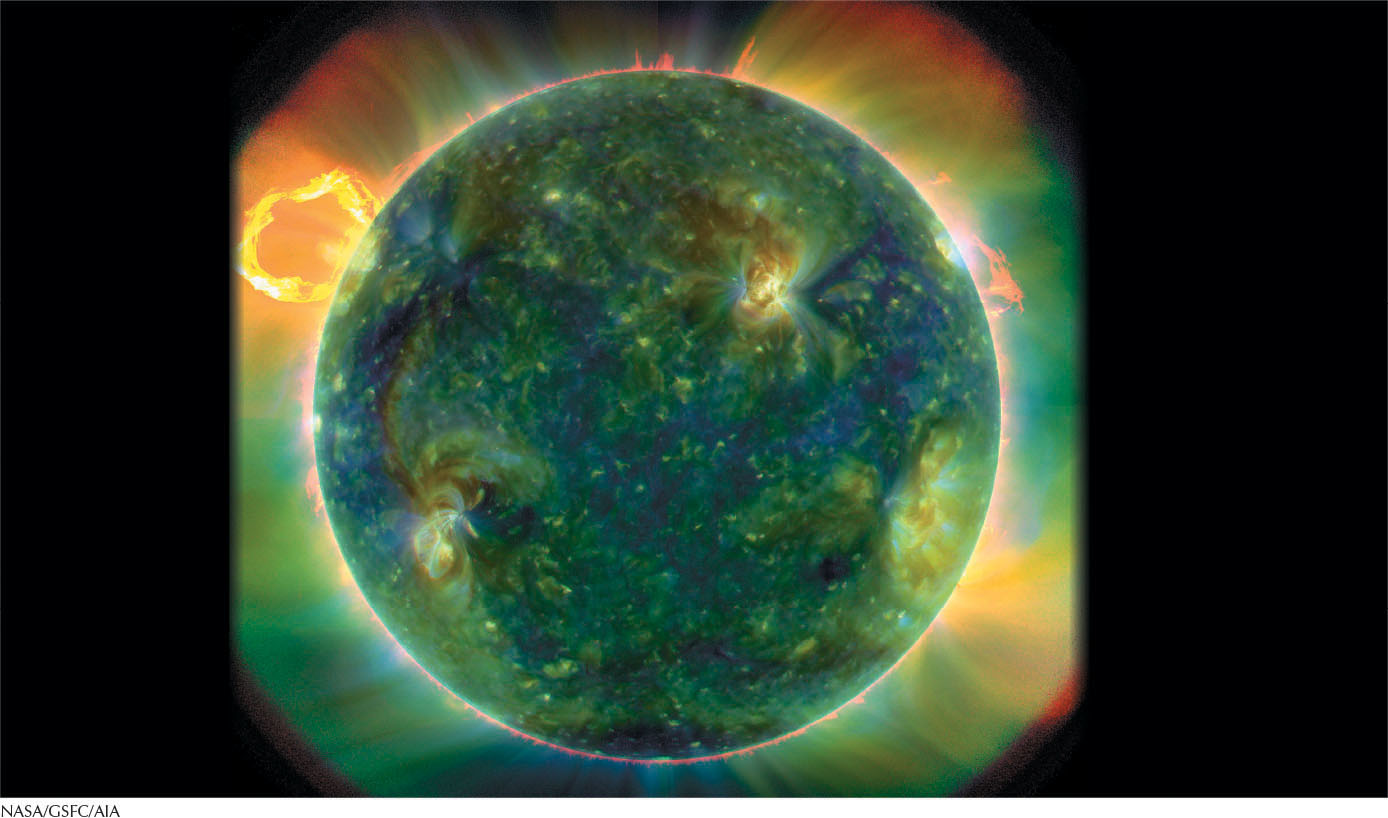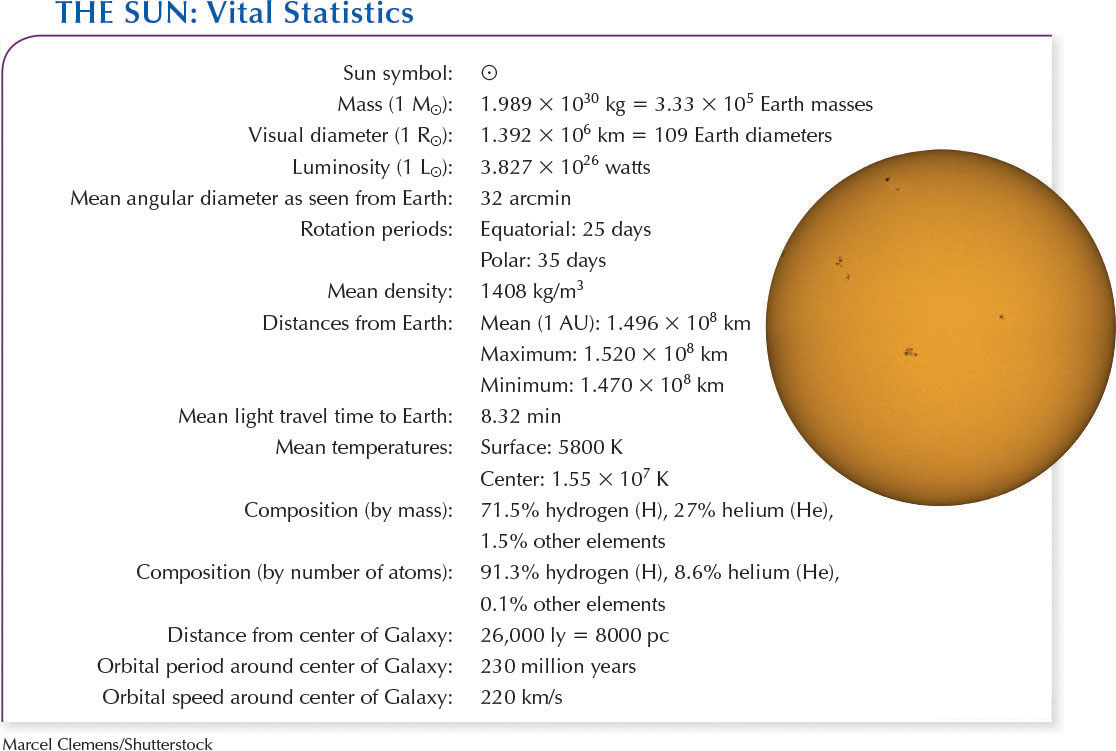311
CHAPTER 10

The Sun: Our Extraordinary Ordinary Star
WHAT DO YOU THINK?
 What percentage of the solar system’s mass is in the Sun?
What percentage of the solar system’s mass is in the Sun?
 Does the Sun have a solid and liquid interior like Earth?
Does the Sun have a solid and liquid interior like Earth?
 What is the surface of the Sun like?
What is the surface of the Sun like?
 Does the Sun rotate? If so, how fast?
Does the Sun rotate? If so, how fast?
 What makes the Sun shine?
What makes the Sun shine?
 Are matter and energy conserved?
Are matter and energy conserved?
Answers to these questions appear in the text beside the corresponding numbers in the margins and at the end of the chapter.
312
Dawn. Light and heat from the Sun begin to arouse our senses and signal the start of daily activity. The earliest societies, realizing that the Sun is essential to the existence and maintenance of life on Earth, revered it. The same respect for the Sun’s awesome power motivated astronomers in the nineteenth and twentieth centuries to figure out why it shines.
 A quick glance (never longer) at the Sun shows a brilliant disk of light, apparently no larger than the Moon. Despite appearances, the Sun is a body of monumental size and mass compared to any object we have studied so far. If the Sun’s surface were as close to Earth as the Moon’s surface is now, the Sun would spread two-thirds of the way across the sky, not to mention that it would be so hot on Earth that our planet would quickly vaporize. The Sun contains as much mass as 333,000 Earths. Indeed, the Sun contains 99.85% of the solar system’s mass.
A quick glance (never longer) at the Sun shows a brilliant disk of light, apparently no larger than the Moon. Despite appearances, the Sun is a body of monumental size and mass compared to any object we have studied so far. If the Sun’s surface were as close to Earth as the Moon’s surface is now, the Sun would spread two-thirds of the way across the sky, not to mention that it would be so hot on Earth that our planet would quickly vaporize. The Sun contains as much mass as 333,000 Earths. Indeed, the Sun contains 99.85% of the solar system’s mass.
The Sun is the closest star to Earth. By studying it, astronomers have come to understand how most stars throughout the universe work. As powerful and majestic as it is in our sky, we are going to discover in the next few chapters that the Sun is an ordinary star, neither among the most massive nor among the least massive. Similarly, it is neither among the brightest nor among the dimmest of stars. Figure 10-1 lists the Sun’s properties.

In this chapter you will discover
 why the Sun is a typical star
why the Sun is a typical star
 how today’s technology has led to a new understanding of solar phenomena, from sunspots to the powerful ejections of solar matter that sometimes enter our atmosphere and disrupt our technology
how today’s technology has led to a new understanding of solar phenomena, from sunspots to the powerful ejections of solar matter that sometimes enter our atmosphere and disrupt our technology
 that some features of the Sun generated by its varying magnetic field occur in cycles
that some features of the Sun generated by its varying magnetic field occur in cycles
 how the Sun generates the energy that makes it shine
how the Sun generates the energy that makes it shine
 new insights into the nature of matter provided by solar neutrinos
new insights into the nature of matter provided by solar neutrinos
313